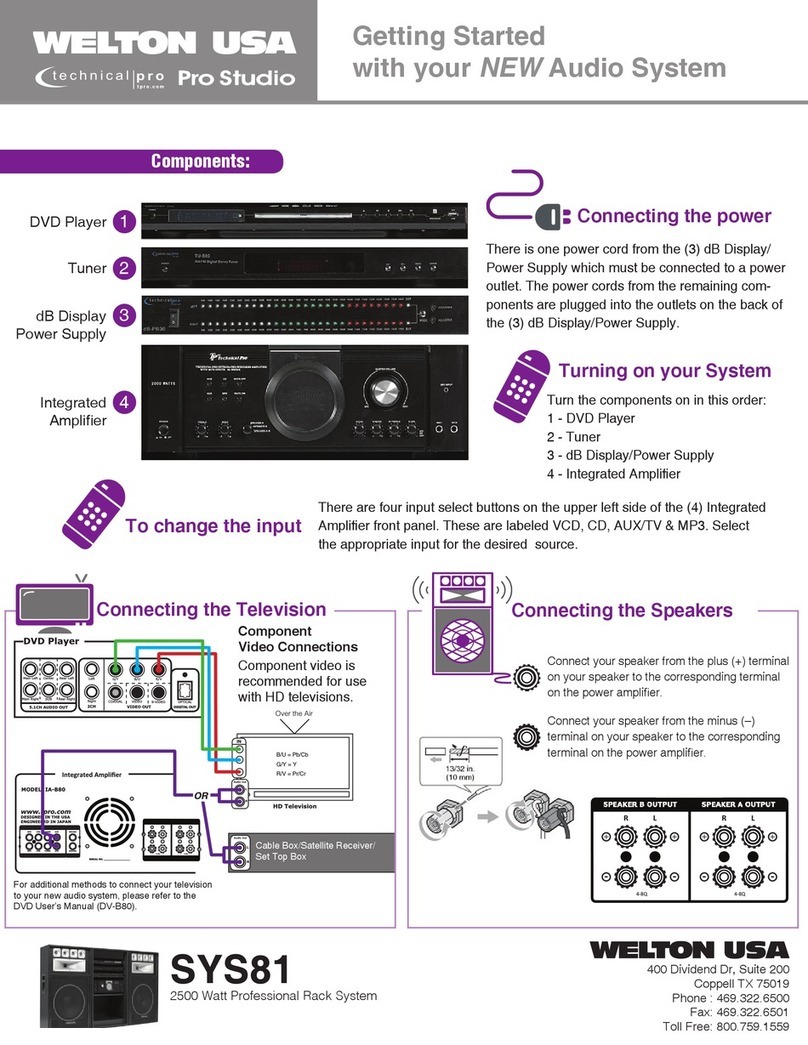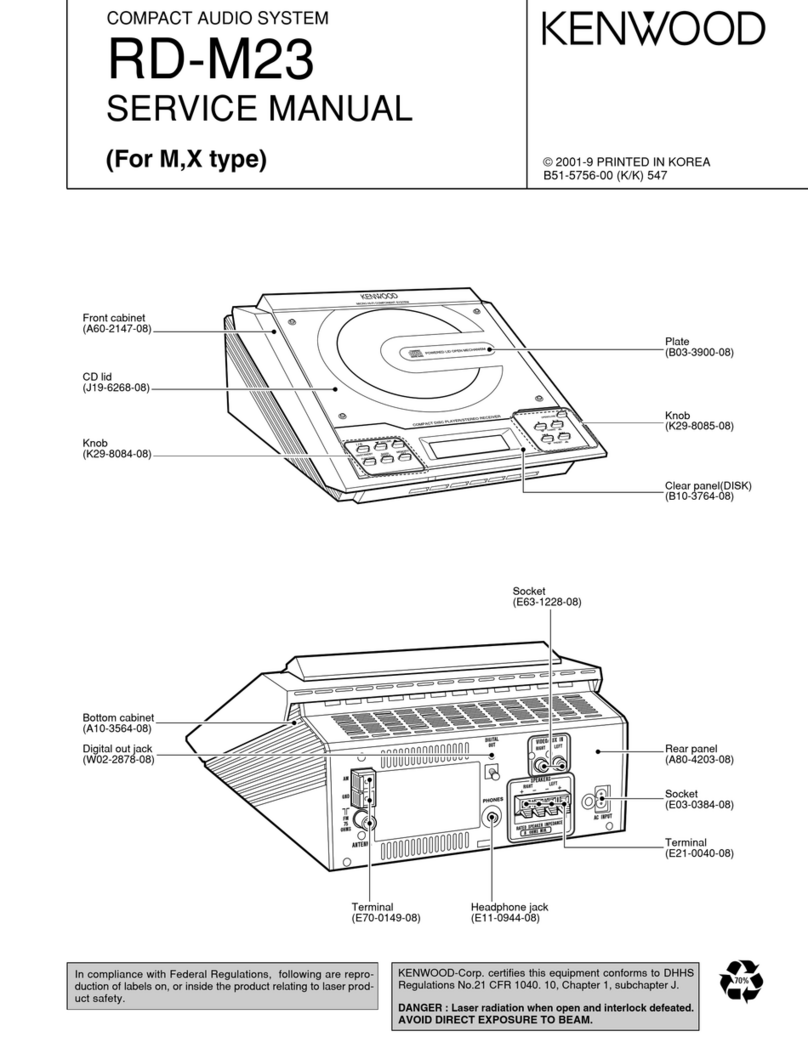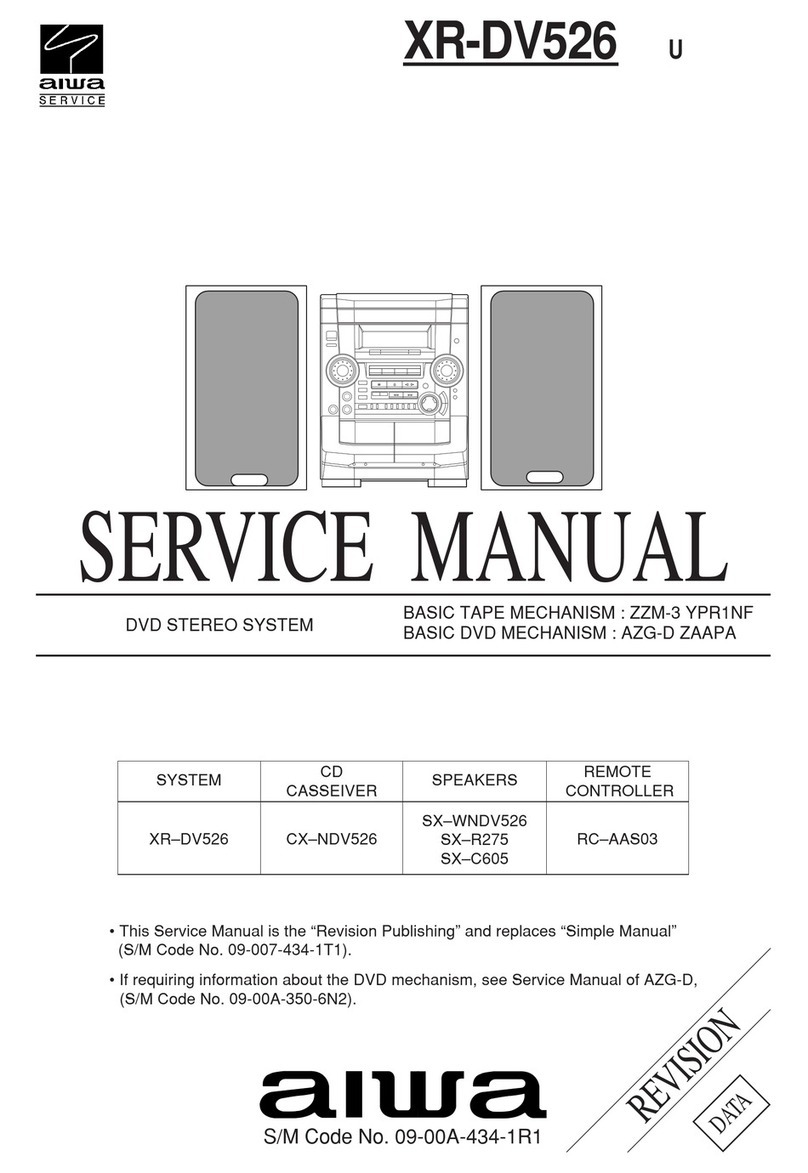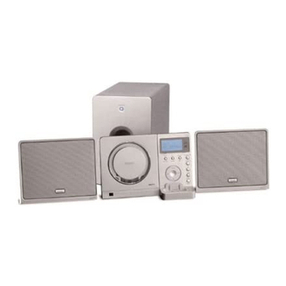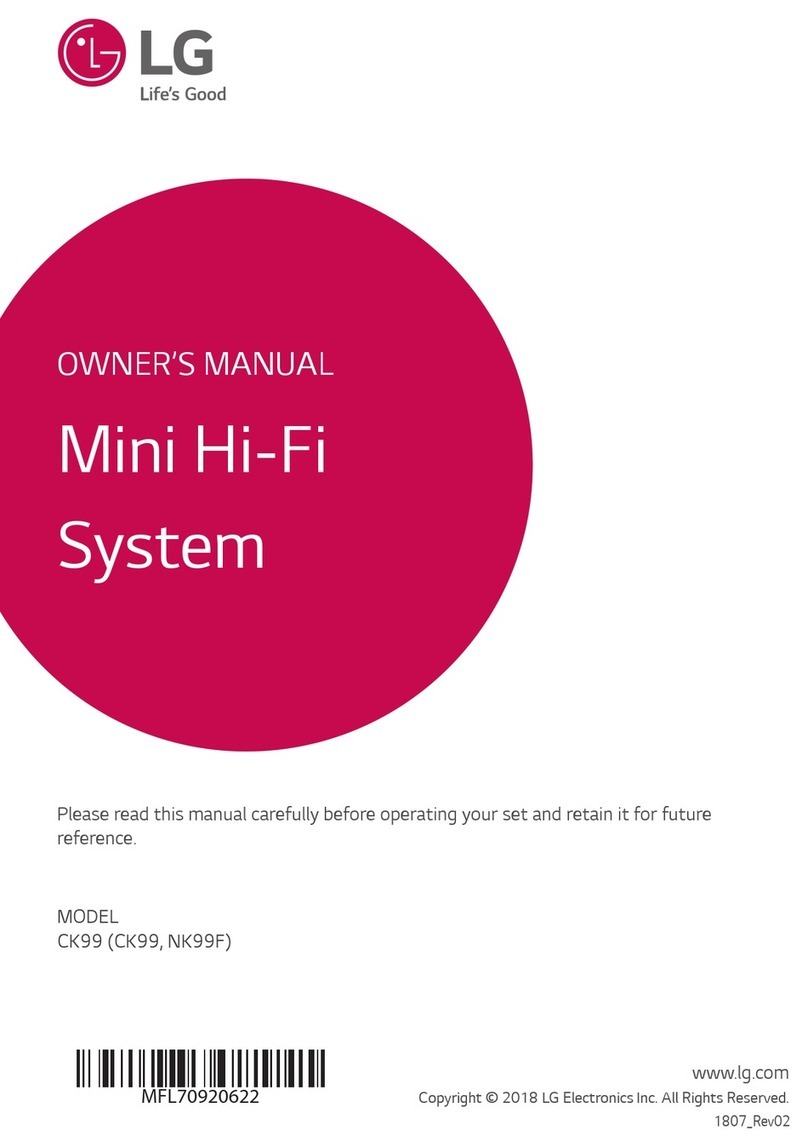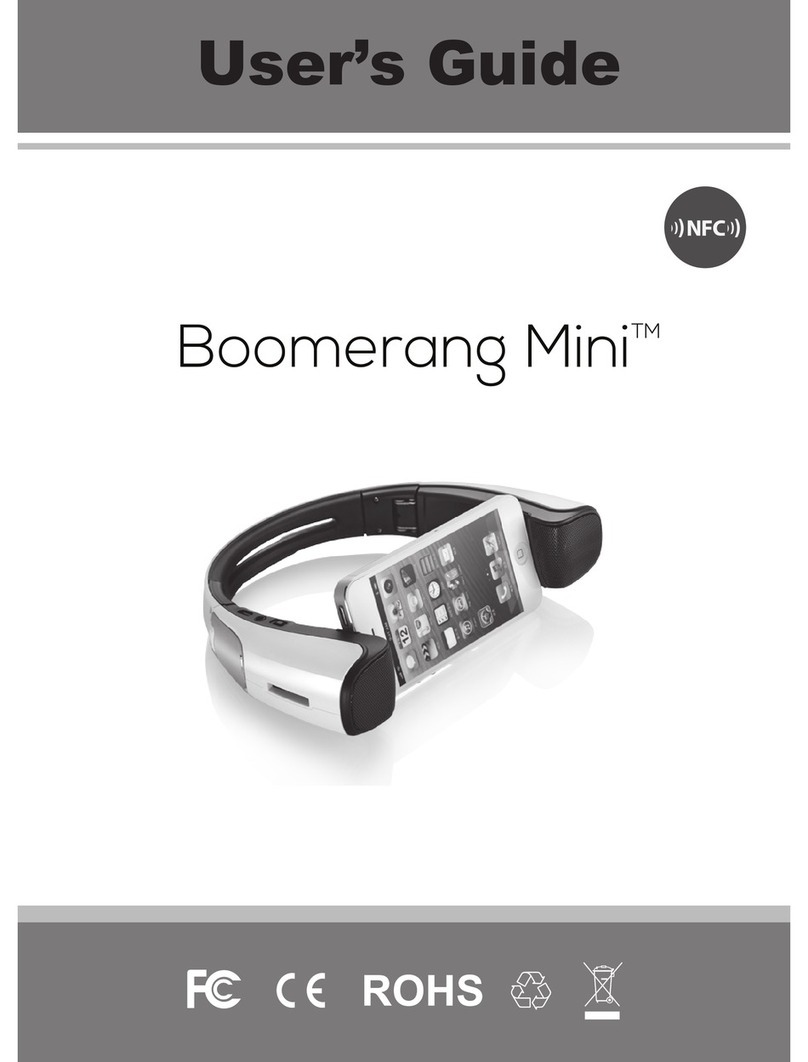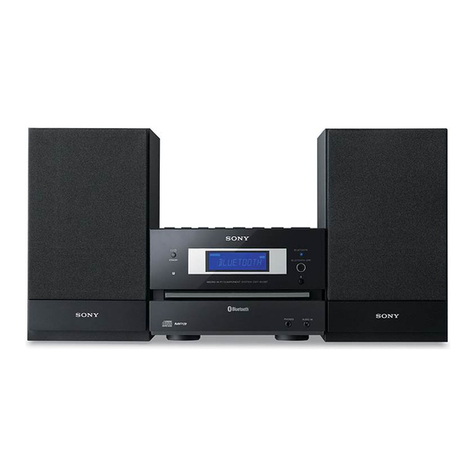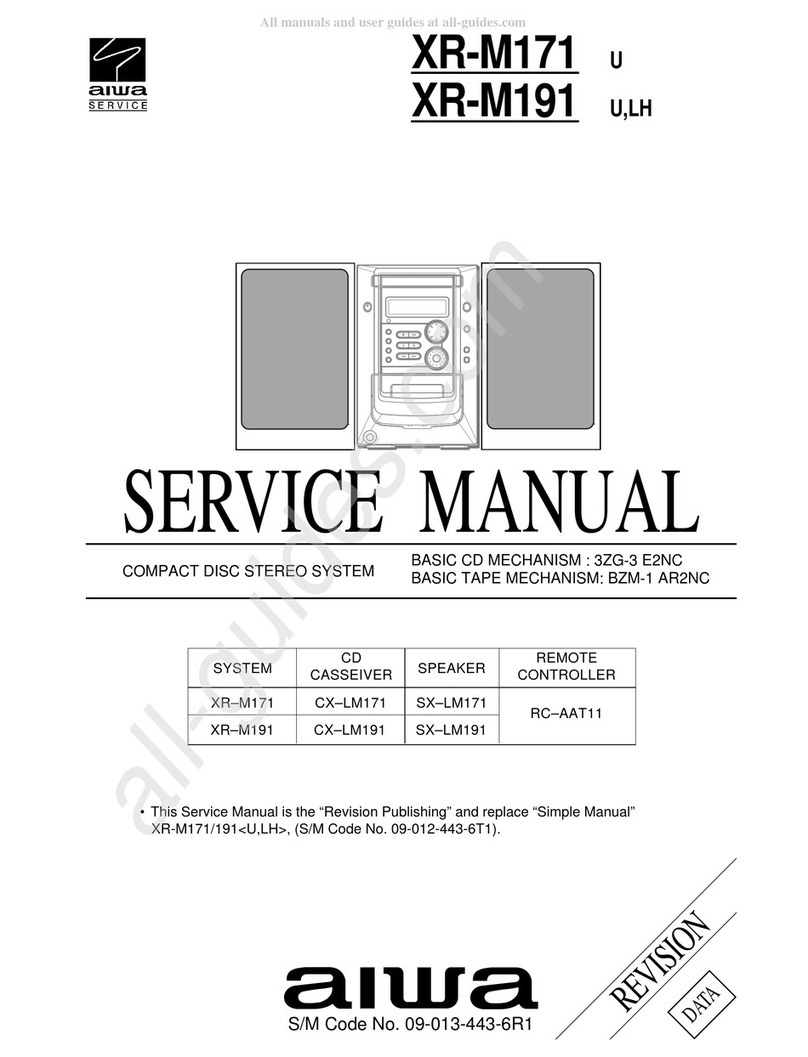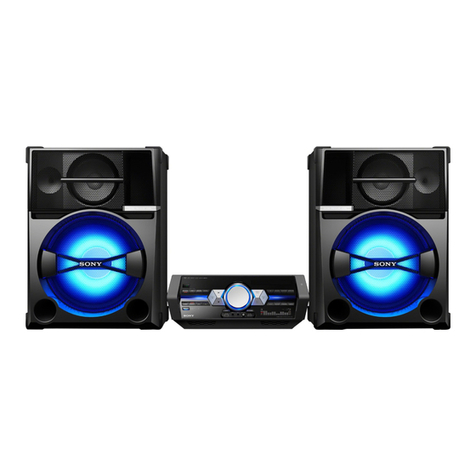SONNECT Sound bullet User manual

User Manual

Hello!
Thank you for purchasing the Sound Bullet.
The Sound Bullet is a rechargeable pocket
sized audio signal and wiring verication
device designed to help your workow. A quick,
handy and powerful tool that can be used as
a substitute for each element that handles
audio, helping you locate any faults quickly and
effectively.
The Sound Bullet should be used as a
preventative tool for quick diagnosis and
troubleshooting problems with complex audio
setups. Check for any potential malfunctioning
elements such as microphones, cables, connectors,
processors or speakers with your Sound Bullet.
It is conceived for applications ranging from
live entertainment audio installation to studio
recording, broadcast and television.
I really hope you enjoy using your Sound Bullet.
Thanks,
Your Sound Bullet

2 Ye ar Warranty
Sonnect Audio (division of TiEmme elettronica
S.a.s.) guarantees the function of the Sound
Bullet for a period of (2) two years from the date
of purchase. If the product becomes defective, or
malfunctions, within two years of purchase Sonnect
Audio will either repair the product free of charge
or replace it (pending inspection of goods and proof
of purchase).
These guarantee provisions do not cover damage
caused by accidents, transportation, incorrect use,
carelessness, third party modications, operation
with non-specied outputs or inputs, Phantom
Power voltages outwith DIN 45596 standards or
charging adaptors non-compliant with USB power-
supply standards. The warranty will become void by
carrying out any repairs or services by third parties.
The full Terms and Conditions contract can be
found on the Sonnect website:
www.sonnectaudio.com/termsandconditions
To obtain the benet of this warranty, ship the
complete product with proof of purchase to:
TiEmme elettronica S.a.s.
Vocabolo Torre Sapienza, 06055
Marsciano PG, Italy

Declaration of Conformity
CE Compliance Statement
We, the manufacturer, do hereby
declare that this device is
compliant with the limits of the European
Council Directive on the approximation of
the laws of the member states relating to
electromagnetic compatibility according to
RL2004/108/EG and European Low Voltage
Directive RL2006/95/EG.
Disposal and Recycle
According to the guideline
RL2002/96/EG (WEEE - Directive
on Waste Electrical and Electronic
Equipment), valid for all European
countries, this product has to be
recycled at the end of its service life. In the
event that the disposal of electronic waste is
not possible, the recycling can also be done by
TiEmme elettronica S.a.s. For this, the device
has to be sent free to the door to:
TiEmme elettronica S.a.s.
Vocabolo Torre Sapienza, 06055
Marsciano PG, Italy

1. Signal Generator
When switched on, the Sound Bullet
generates a pink noise signal, which
is routed to the male XLR by default.
A 1 kHz sine wave tone can also be
selected by pressing the SEL button.
Press the TO button to route the
generator to the 1/4” Jack and the
internal speaker/Mini-Jack.
The generator’s output can
be adjusted to three levels:
-10, -20 and -40 dBu.
2. 48V check
When plugged into a balanced input
of a sound console, the Sound Bullet
checks for Phantom Power, which is individually
metered on pins 2 and 3. Two dedicated LEDs
will illuminate according to the DIN 45596
voltage standard (48V ±4V). In the event that the
voltage detected is between 24V and 44V, the
LEDs will ash slowly.
2
1
Product Overview

4. XLR Input Metering
Audio signals present on the female
XLR of the Sound Bullet are metered
for level in order to detect an incoming
signal in loud environments. Two LEDs
will illuminate according to the RMS
amplitude of the signal. The SG LED is
lit when the signal exceeds -25dBu RMS
and the PK LED is lit when the signal
exceeds +10dBu.
3. Speaker/Mini-Jack
Signals plugged into the female XLR or 1/4” Jack will
be reproduced by the internal speaker (3a). When a
3.5mm Jack is inserted into the Mini-Jack
port (3b), the speaker is muted and the
signal is directed to the Mini-Jack*. The
internal generator can also be routed
to the speaker/Mini-Jack. The volume
knob on the side will adjust both the
speaker and Mini-Jack output level.
OUTPUT ROUTING
3a
3b
4

5. XLR Cable Tester
An XLR cable can be plugged into either end of
the Sound Bullet in order to conduct a continuity
test on the XLR pins 1, 2 and 3. To enter (and exit)
this function, press and hold the SEL button for 2
seconds. To change the pin under test press the
TO button.
Conceptual Diagram
The following diagram sums up the Sound Bullet’s
internal signal ow:
5
* Do not use 48V Phantom Power on a 3.5mm Jack
plugged into the Sound Bullet.

Line-check a multicore
The Sound Bullet can test a multicore line system
connected to the inputs of a sound console.
Activating Phantom Power on the input channels
desired to be checked will allow for a complete
test of all three cores of the XLR line.
Simply switch on the Sound Bullet, which will
start to generate pink noise, and plug it into the
XLR line being tested. The operator at the sound
desk will listen out for the pink noise, while the
operator on the other end will check the 48V
indication on the Sound Bullet (see table). This
will determine if all pins of the XLR line are
functional.
*Result independent
of a signal being
detected at the
sound desk.
XLR Line
Line OK
PIN 3 Defective*
PIN 2 Defective*
PIN 1 Defective*
Examples of Use

Test a DI box input
The Sound Bullet can produce an unbalanced
signal, which is very useful for quickly testing
one or multiple DI boxes connected to a mixing
console.
The provided 1/4” Jack-Jack adaptor
allows you to quickly plug the Sound
Bullet straight into the input of a DI Box.
Simply switch on the Sound Bullet, which will start
to generate pink noise, and adjust the output level.
Direct the generator to the 1/4” Jack by pressing TO.
As a conrmation, you’ll hear pink noise coming
out of the speaker*, along with the function LED
turning blue. With the Jack adaptor insterted, plug
the Sound Bullet into the DI box and check for pink
noise being received at the mixing console.
*Adjusting the volume knob down will not affect
the output of the 1/4” Jack.
OUTPUT ROUTING
INPUTPAD LINK

Troubleshoot FX pedalboards
The Sound Bullet can be used as a quick diagnostic
tool to troubleshoot FX pedalboards.
Press the TO button to switch between sending and
receiving audio via the 1/4” Jack. This will allow you
to quickly inject a signal into the input of an FX
pedal or listen to its output.
This way you can quickly detect which pedal in the
chain is faulty or where the signal path was wrongly
congured.
INPUTOUTPUTINPUTOUTPUT INPUTOUTPUT
Examples of Use

Check IEM or recording feeds
With your Sound Bullet it is possible to test a
hardwired IEM line, or a recording feed coming
from a sound console or outputs from any device,
for example a loudspeaker system processor.
When the Sound Bullet is switched on, signals
present on the female XLR or 1/4” Jack are
reproduced by the internal speaker by default.
Make sure the mixing desk is sending either pink
noise, music or any other type of audio into the
line you are testing and simply plug that line into
the Sound Bullet.
The input meter on the Sound Bullet will give you
a general indication of signal presence “SG” or a
signal being very loud “PK”. This is useful in noisey
environments or if you can’t get your ear close
enough to the Sound Bullet’s speaker.
If you wish to gain a more accurate listen to the
signal, plug your headphones into the Sound
Bullet’s Mini-Jack output. Adjust the speaker or
headphones output level by turning the volume
knob on the side.

Battery indications
The LED by the Micro-USB port will
indicate the charging state while the Sound Bullet
is being charged. The LED will light up red while
the battery is charging, and will turn off when the
battery is fully charged.
The function LED by the SEL button
will blink white as a warning when
the battery is:
• Low: LED ashes white 3 times every 6
seconds.
• Discharged: LED ashes white 6 times every
2 seconds - the Sound Bullet’s main functions
are switched off.
Charge your Sound Bullet using the provided
Micro-USB cable.
Please use a standard USB charger (5V, 500mA).
Charging your Sound Bullet takes around one
hour and the device can be used while charging.
Charging

XLR 1/4” unbal Jack
1 kHz Tone
Output (dBu) -40, -20, -10 ±1dB -40, -20, -10 ±1dB
Pink Noise
Output (dBu) -40, -20, -10 ±1dB -40, -20, -10 ±1dB
”SG” Meter
Threshold -25 dBu n/a
”PK” Meter
Threshold +10 dBu n/a
Ouput
Impedance 350 Ω 600 Ω
Input
Impedance 3 kΩ 600 Ω / 3.5 kΩ
P48 Voltage
Range 44 V - 52 V n/a
Cable-Tester
Voltage 3.3 V n/a
Typical Values and Tolerances
Technical Specifications
Other manuals for Sound bullet
1
Table of contents


